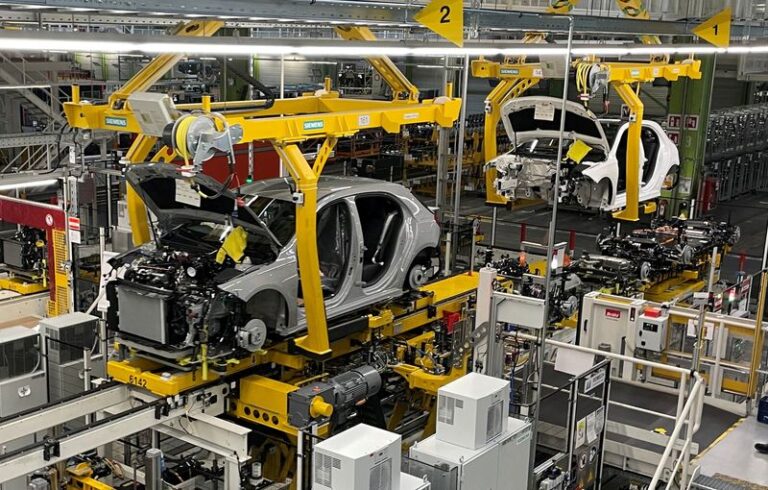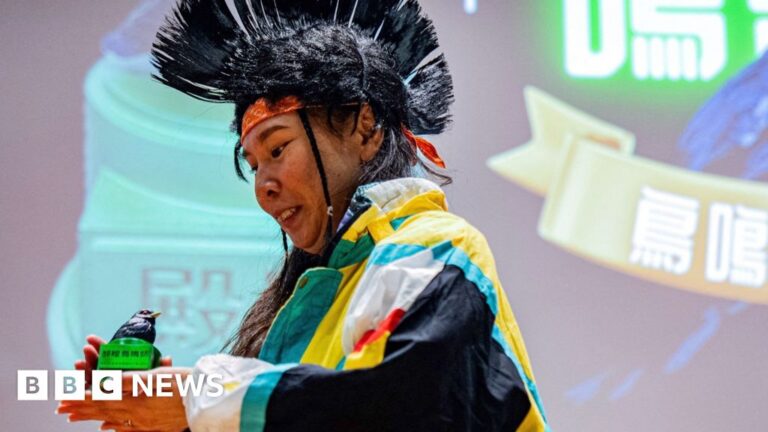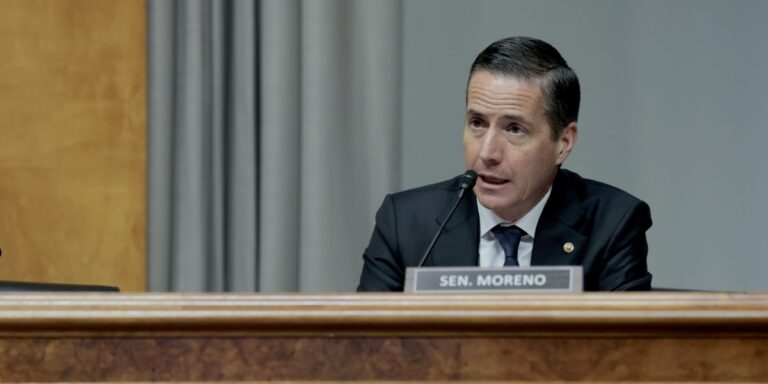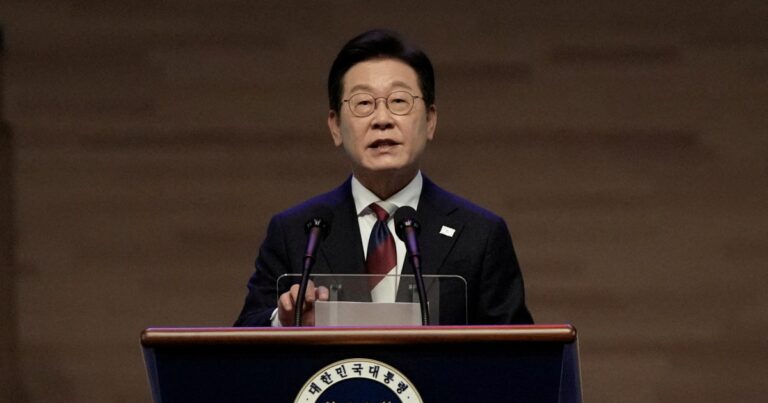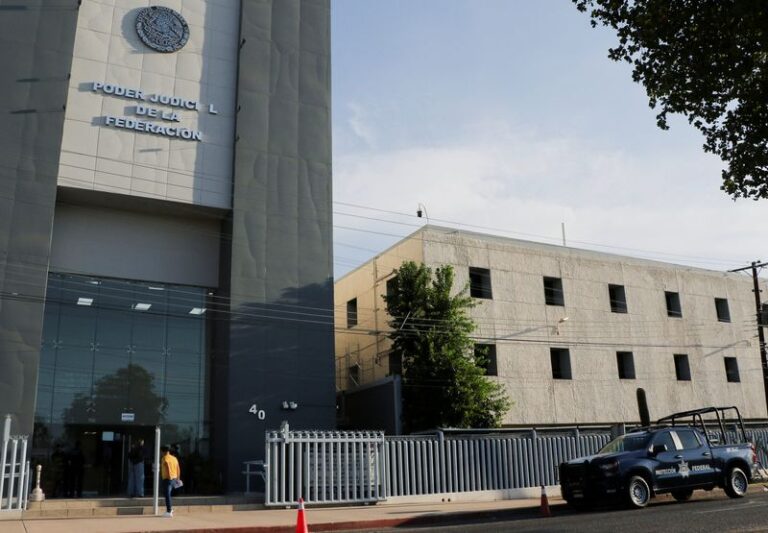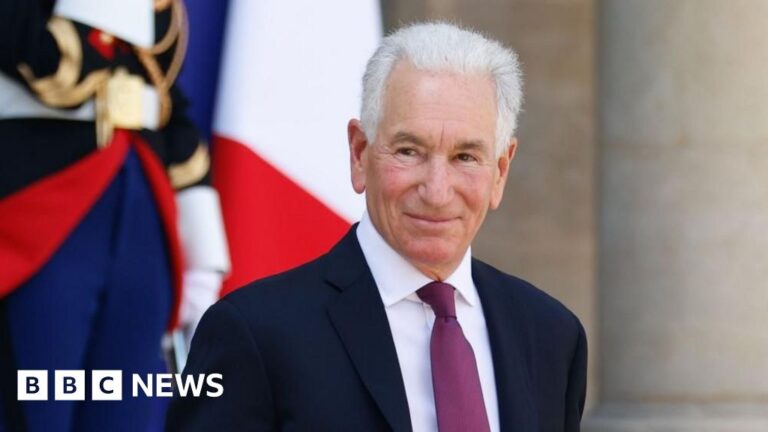German business sentiment rises to highest level in more than a year
Hongkongers compete in first-ever bird call contest in the city
The Hong Kong Bird Watching Society hosted its first-ever bird call contest on Saturday, with the aim to promote conservation awareness.
It saw bird fanatics dress up and take to the stage to mimic rhythmic calls of the Koel, Asian barred owlet, Chestnut-winged cockatoo and more.
The top prize went to Bob Chan for his impression of a Eurasian tree sparrow. More than 580 types of bird species have been recorded in Hong Kong.
Republican lawmakers advocate for tariffs customized to benefit local businesses
Congressional Republicans are embracing Donald Trump’s tariff campaign as a way to advance home-state causes, lobbying the president to impose more import duties to protect local companies.
The rank-and-file GOP lawmakers’ entreaties, which often present trade actions shoring up favored manufacturers as a winning tactic for midterm elections, bolster the political case for broadening US tariffs.
Trump announced two sweeping expansions of trade barriers in recent days, on Tuesday wideningsteel and aluminum tariffs to include more than 400 types of items that contain the metals. On Friday, he announced a trade investigation into furniture imports, which he said would lead to new tariffs within 50 days.
In a social media post announcing the furniture trade action, he cited the boost it would provide to manufacturers in North Carolina and Michigan, two states with potentially pivotal Senate races next year.
Read more: Trump Announces Furniture Imports Probe, Setting Up Tariffs
More than a dozen Republican lawmakers have pushed for fresh or higher tariffs to protect local industries. Several of the lawmakers said Trump granted their requests or said White House officials signaled they would approve the asks.
Republican Senator Bernie Moreno pressed Commerce Secretary Howard Lutnick to expand steel tariffs to include steel-based products like washing machines and refrigerators. The administration moved in June to impose duties on home appliances based on their steel content, benefiting companies including Whirlpool Corp., which has five manufacturing plants in Moreno’s home state of Ohio.
Representative Mike Kelly, a Pennsylvania Republican, pushed the administration to raise tariffs on electrical steel laminations and cores on behalf of Cleveland-Cliffs Inc., an effort to protect a manufacturing facility in his district.
The items were included in the broader tariffs on products made from steel and aluminum that the administration announced in a notice posted Tuesday.
Read more: Trump Widens Metal Tariffs to Target Baby Gear, Motorcycles
Spokespeople for the White House and US Commerce Department didn’t respond to requests for comment on the role lawmakers’ requests played in the tariff decisions.
In the protectionist lobbying by Trump allies, tariffs are cast as the economic savior for struggling local industries and political boost for the GOP. It’s a stark example of how to successfully lobby in today’s murky trade environment, even as Trump has openly claimed that his unpredictability gives him leverage.
The tariff decisions suggest the White House is open to input on the trade matters from outsiders friendly to the administration. Trump’s announcements on trade deals regularly arrived in the form of letters posted to trading partners on social media, excluding Congress from direct involvement in negotiations.
Senator Tommy Tuberville, an Alabama Republican, said before Trump’s furniture trade action was announced that the White House has been receptive to his lobbying for a tariff of at least 60% on wood cabinets — echoing local manufacturers’ pleas.
Tuberville said he expects the administration ultimately will fulfill the request, though it wasn’t immediately clear whether the furniture trade probe will lead to tariffs on wood cabinets.
Cabinet makers were “about to go under” during Trump’s first term and he saved them, Tuberville said in a July interview. “He’s doing the same thing now.”
Republican Representative Joe Wilson of South Carolina and Republican Senator Katie Britt of Alabama are among other lawmakers pushing for tariffs on products made of wood. Some local manufacturers in their states want a duty of at least 100% on cabinets.
The lawmakers’ lobbying doesn’t occur in a vacuum. They’re often relaying requests from companies and trade groups that also have their own connections with the Trump administration.
Stephen Vaughn, a senior trade adviser during Trump’s first term, represented Cleveland-Cliffs in the company’s efforts to secure the tariffs on products made from steel.
Cleveland-Cliffs chief executive officer Lourenco Goncalves praised the expansion of tariffs. The action “gives us certainty that the American domestic market will not be undercut by unfairly traded steel embedded in derivative products,” he said.
Lobbying is a bipartisan act and occurs during every presidency, but these efforts are different because of Trump’s emphasis on personal relationships, according to Matthew Foster, a professional lecturer at American University’s School of Public Affairs.
Trump sometimes amplifies the positions of the last person he’s talked to, which explains how his close allies could benefit when they ask for favors, he added.
It’s all about having an advocate with a history of access to the president to get the issue at hand through the door, said Gary Hufbauer, a senior fellow at the Peterson Institute for International Economics. Under Trump, that’s the normal way of doing business, he added.
Moreno, an Ohio Republican, is an active member in the president’s inner circle. The freshman senator said he talks to the president once a week, often reiterating his desire for Trump to force out Federal Reserve Chairman Jerome Powell.
Moreno praised Lutnick for understanding business demands, touting the need to protect Whirlpool from cheaper imported steel.
“The reality is Whirlpool Corporation, which has a massive presence in Ohio, is the last appliance manufacturer in America,” Moreno said in an interview, adding that the Chinese are “interested in building industries that will dominate the world and crush American companies. We can’t allow them to do that.”
The lawmakers efforts on behalf of tariffs offer a clear potential political benefit: a message to voters that their manufacturing jobs will be protected. But they also threaten to raise the cost of living for consumers.
The tariffs “may work politically, but they may not work economically, and those are two different fields,” Hufbauer said.
A sizable bloc of Trump voters have reservations about the president’s tariffs. About one in four self-identified Trump voters said they thought the tariffs were hurting rather than helping the US in negotiating better trade deals, according to a Politico-Morning Consult poll in July.
Retaliatory tariffs during Trump’s first term prompted domestic turmoil for some key industries in Republican-lean states, including Kentucky bourbon and Wisconsin-based Harley-Davidson motorcycles. That’s prompted Republican senators Mitch McConnell and Rand Paul to publicly oppose the trade war as harmful to their constituents.
Exploring North Korea’s Newest Beach Resort
new video loaded: A Glimpse into North Korea’s New Beach Resort
transcript
transcript
A Glimpse into North Korea’s New Beach Resort
Daria Zubkova, one of the first foreign tourists to visit the Wonsan Kalma resort, said the experience felt like other beach trips she’d taken before, but with some unusual features.
-
These videos give an unfiltered look at North Korea’s new beach resort and the country’s efforts to attract foreign tourists. The footage was filmed by Daria Zubkova, a Russian tourist who was one of the first to stay at Wonsan Kalma resort on the east coast. This massive tourist zone is a pet project of North Korean leader Kim Jong-un, and part of his vision to modernize the country and boost the economy. Its success hinges on striking a balance between bringing in foreign tourists, while controlling what kind of outside information seeps into the country. So in July, the resort welcomed the first group of tourists from Russia. Zubkova says she was part of a group of Russian travelers who each paid about $1,400 for the week-long trip. It started with a train ride in Pyongyang. After the 10-hour journey, they arrived at Kalma beach, a former military drill site that’s now lined with hotels. Zubkova said within the confines of the resort, they weren’t always monitored, but their interactions with regular North Koreans were restricted. The Russians also had two dedicated tour guides, and the resort was staffed with a large medical team. Zubkova said the trip to North Korea mostly felt like any other she’s taken abroad, with some exceptions. The travel agency said the internet was available, but her emails would be monitored by hotel staff. There was a television in her room, but it only aired Russian, Chinese and North Korean programs. Two days after the Russian tourists left the country, The North Korean authorities announced that they would temporarily stop accepting foreign visitors and didn’t give a reason.
Recent episodes in International
International video coverage from The New York Times.
International video coverage from The New York Times.
Challenging Client Situation
A required part of this site couldn’t load. This may be due to a browser
extension, network issues, or browser settings. Please check your
connection, disable any ad blockers, or try using a different browser.
Elise Gratton Commits Verbally to Yale for Winter Juniors Qualifier 2026-27
By Anne Lepesant on SwimSwam

Fitter and Faster Swim Camps is the proud sponsor of SwimSwam’s College Recruiting Channel and all commitment news. For many, swimming in college is a lifelong dream that is pursued with dedication and determination. Fitter and Faster is proud to honor these athletes and those who supported them on their journey.
USA Swimming Scholastic All-American Elise Gratton, from Lafayette, California, has verbally committed to the admission process* at Yale University for 2026-27.
She told SwimSwam that she chose Yale because of the: “Tremendous opportunity to pursue both my athletic and academic careers at the highest level. When I visited campus on my recruiting trip, I was immediately impressed with the passion and success of everyone, and I knew I wanted to surround myself with these high character teammates during my college experience.”
A rising senior at Campolindo High School in Moraga, she was runner-up in the 100 breast (1:02.57) and placed 11th in prelims of the 100 free (51.71) at CIF-North Coast Section Championships in May. She went on to the California State Meet and came in 13th in the 100 breast (1:03.66) and was 19th in prelims of the 100 free (51.48).
Gratton does her year-round swimming with Orinda Aquatics under coach Ronnie Heidary. She is a Winter Juniors Qualifier and a Canadian Olympic Trials Qualifier.
At Novato Sectionals this summer, she placed 6th in the 100 breast (1:14.08) and 18th in the 200 IM (2:26.75), earning PBs in both events; she was also 29th in prelims of the 200 breast (2:49.81). In short course season, she clocked lifetime bests in the 50 free, 100/200 breast, 100 fly, and 200 IM.
Yale finished 3rd in the standings at the 2025 Ivy League Women’s Championships. It took 1:02.26/2:15.46 in the breaststroke events, 49.99 in the 100 free, and 53.49 in the 100 fly to score in the top 8. Gratton’s best times would have made the ‘B’ final of the 100 breast and the ‘C’ finals of the 100 free and 200 breast.
Best SCY times:
- 100 breast – 1:02.57
- 200 breast – 2:20.14
- 100 free – 51.13
- 100 fly – 56.71
- 50 free – 24.20
- 200 IM – 2:06.99
“I am thrilled to announce my verbal commitment to the admissions process and further my academic and athletic career at Yale University. Thank you to my family, teammates, and coaches for their support along the way. I am very grateful to the Yale swim coaches for this incredible opportunity! Go Bulldogs! #boolaboola”
*Note: A verbal commitment between an Ivy League coach and a prospective student-athlete is not an offer of admission, as only the Admission Office has that authority. The coach can only commit his or her support in the admission process. Ivy League Admission Offices do not issue “Likely Letters” before October 1 of the prospective student-athlete’s senior year of high school. The Likely Letter, while issued after an initial read of the student’s application, is not an offer of admission to the university.
If you have a commitment to report, please send an email with a photo (landscape, or horizontal, looks best) and a quote to Recruits@swimswam.com.
About the Fitter and Faster Swim Tour
Fitter & Faster Swim Camps feature the most innovative teaching platforms for competitive swimmers of all levels. Camps are produced year-round throughout the USA and Canada. All camps are led by elite swimmers and coaches. Visit fitterandfaster.com to find or request a swim camp near you.
FFT SOCIAL
Instagram – @fitterandfasterswimtour
Facebook – @fitterandfastertour
Twitter – @fitterandfaster
FFT is a SwimSwam partner.
Read the full story on SwimSwam: Winter Juniors Qualifier Elise Gratton Verbally Commits to Yale for 2026-27
Drone Learns How to Fly Through Observation of Maple Seeds: A Successful Lift-Off
In its quest for survival, nature has devised a thousand ways to optimize species reproduction. In the case of mammals and insects, species usually go in search of a mate, but a plant has more restrictions. Typically, the plant kingdom depends on other species, such as bees, to pollinate flowers or birds as messengers of their seeds. However, in some cases, plants and trees opt for solutions closer to aerospace engineering. This is the case with the structure of maple seeds, which have inspired a new technological breakthrough based on biomimetics.
A drone inspired by the seed “helicopter”
The light maple seed, falling from the tree in a spinning motion, is sometimes described as one of nature’s helicopters. And that is what three scientists from the City University of Hong Kong looked at when they wondered how to increase the flight range of a lightweight drone. Specifically, their device weighs less than 100 grams.
The approach of the new drone is to dispense with a helicopter-based central rotor and instead install two rotors at the tips of the blades. These blades are identical in design to maple seed pods and offer remarkable stability with very low energy expenditure.
The prototype weighs thirty-five grams, and its blades rotate at 200 rpm, keeping the device in the air for twenty-four minutes thanks to a small battery. The direction of flight can be controlled simply by changing the speed of each rotor.
The model they have developed can carry small payloads of just over twenty grams and has been tested with a miniature camera, which would allow it to be used for mapping or monitoring spaces. The paper on this innovative device has been published in Science Robotics.
The striking aerodynamics of maple seeds
As it develops, the seed of the maple tree is covered by a v-shaped sheath. At first, while still green, the seed falls like a stone from the tree. However, as it dries, it loses water and weight. When it reaches the point of optimum maturity, the seed is ready to take a flight to other latitudes. Perhaps not as far as a migrating bird, but maple seeds have reportedly traveled up to four kilometers. How do they do it?

The secret lies in the structure of their “blades.” As revealed by a wind tunnel study published in the journal Science, the maple seed blades generate lift, i.e., the same force that allows airplane wings to take flight. Thus, when falling, the thin maple seed blades generate a miniature vortex that keeps them in the air longer. In addition to the Hong Kong scientists’ drone, there are other flying, biomimicry-based, systems such as this Airbus aircraft.
Biomimetic companies?
In times when sustainability is an integral value of business projects, it is not surprising to see the emergence of a new figure: the Director of Biomimicry. If biomimicry enables the implementation of sustainable solutions in industrial designs, why not introduce this perspective into all the processes of a company?
That’s the logic behind Jamie Miller’s appointment as director of biomimetics at a Canadian architectural firm. Miller, who studied with biologist and biomimetics pioneer Jenine Benyus, is already integrating biomimetic solutions into his firm’s projects.
Specifically, they have already applied biomimetic solutions in residential buildings in places like Ontario and Gabon. For example, they have designed a house in India that uses cooling solutions based on elephant skin and termite mounds, and a garden emulating a forest ecosystem.
Miller also talks about how spider webs or mangroves can provide inspiration for creating more energy-efficient structures. Thus, spiders can create an extremely resistant material with hardly any energy expenditure, unlike conventional materials such as concrete. In fact, this expert believes that biomimetics could be one of the greatest weapons in the fight against climate change.
If you want to learn about a biomimetic architecture project that integrates this approach, you should check out this article.
Source:
Lee from South Korea to meet with Trump, focusing on trade and security agenda | Latest updates on Donald Trump
Seoul, South Korea – South Korean President Lee Jae-myung is set to meet United States President Donald Trump for the first time in a high-stakes visit to his country’s closest and most important ally.
After a one-day meeting with Japanese Prime Minister Shigeru Ishiba in Tokyo, Lee arrived in Washington, DC, on Sunday ahead of an official working-level meeting at the White House with Trump.
It will be the first time the two heads of state meet.
Their summit follows a trade deal in July in which Washington agreed to cut its reciprocal tariff on South Korea to 15 percent from an initially proposed 25 percent.
The meeting is crucial for South Korea, whose engagement with the Trump administration was disrupted by domestic political turmoil, ignited by the brief declaration of martial law announced in December by the country’s impeached former president, Yoon Suk-yeol.
Discussion will focus on ironing out details of the unwritten July trade deal, which involves South Korea agreeing to buy $100bn in US energy and invest $350bn in the US economy.
On top of those dizzying sums are direct investments in the US, which are expected from South Korean companies, and which Trump has mentioned will be decided during their talks.
Accompanied by first lady Kim Hea-kyung, Lee will lead a delegation formed by the heads of South Korean top conglomerates, including Samsung Electronics, SK Group, Hyundai Motor and LG Group.
The four companies alone are already known to contribute approximately 126 trillion won ($91.2bn) in direct investments to the US, according to the South Korean daily Maeil Business Newspaper.
Choi Yoon-jung, a principal research fellow at the Sejong Institute in Seoul, said Lee needs to be deliberate and direct with Trump in the talks, as “South Korea is in a tough predicament in terms of trade with the US compared to the past”.
“It will be important for President Lee to explain how investments will be designed to serve US national interests and to remind Trump that the two nations are close trading partners who went through large ordeals to realise their Free Trade Agreement over two decades ago,” Choi told Al Jazeera.
Mason Richey, a professor of international politics at the Hankuk University of Foreign Studies (HUFS), said the direction of the talks on investments is likely to be “unpredictable”.
“Not only are the current 15 percent tariffs overwhelmingly likely to stay on, but the investment part of the deal is likely to remain unclear and subject to unpredictable adjustment by the White House,” Richey told Al Jazeera.
Analysts say shipbuilding is one area where Trump clearly desires to have South Korea as a key partner to play catch-up to China’s naval fleet, which leads in terms of sheer numbers and is also making technological advancements.
Officials in Seoul have previously stated that a key component of the tariff deal with Washington would include a partnership worth about $150bn to assist in rebuilding the US shipbuilding industry.
To that end, after visiting the White House, Lee will head to Philadelphia to visit the Philly Shipyard, which was bought by the South Korean company Hanwha Group last year.
Analysts also say that battery production and semiconductors are some other sectors where Trump has set clear objectives to increase US capacity, and where South Korea has shown willingness and interest in being that partner.
“The South Korean government is also willing to actively participate in the ‘modernisation’ of its alliance with the US, that could include increasing contributions to upholding the region’s security and development,” said the Sejong Institute’s Choi.
Another major discussion point will be Seoul and Washington’s defence posture regarding the growing threats from North Korea, as well as the development of a strategic alliance to address the changing international security and economic environment.
“The pressures for the role of US forces on the Korean Peninsula to evolve has been growing for years,” Jenny Town, the director of the Washington, DC-based research programme 38 North, told Al Jazeera.
This evolution was especially so with great power competition increasing from China, Town said.
“The Trump administration is focused on how to maximise resources for US interests and priorities, so it is likely that some changes will be made during this term,” Town said.
“How drastic or dramatic those changes will depend on a number of factors, including the state of the US domestic political infrastructure that provides checks and balances to executive decisions,” she said.
A US Senate defence policy bill for fiscal year 2026 includes a ban on the use of funds to reduce the number of US Forces Korea (USFK) troops to below the current level of 28,500 service members.
“This makes it unlikely that there will be an immediate change in troop deployment numbers in South Korea,” Choi said.
“So, the big point of contention will be the job assignment of the troops to match US interests. I think there’s a possibility of Trump asking South Korea to take on a bigger role in regional security, such as taking part in the conflict involving Taiwan.”
Financial negotiations between Trump and Lee may also tip into security details, as the US president has regularly called for South Korea to pay more for the US troops stationed on its soil.
Trump has made that same call since his first presidential term.
In addition to providing more than $1bn for the presence of USFK forces, South Korea also paid the entire cost of building Camp Humphreys, the largest US base overseas, situated 64km (39 miles) south of Seoul.
Trump has said that he wants defence spending to reach closer to 5 percent of gross domestic product (GDP) for all US allies.
Today, South Korea’s defence budget is at 3.5 percent of GDP.
Transfer of wartime operational command – referring to the transfer of control of South Korean forces during wartime from the US to South Korea – has long been a point of discussion between Seoul and Washington.
Under the Lee administration’s five-year governance plan, Seoul hopes to have the transition happen by 2030.

The Trump-Lee meeting also comes after North Korean leader Kim Jong Un’s powerful sister recently dismissed Washington and Seoul’s stated desires to restart diplomacy aimed at defusing Pyongyang’s nuclear programme.
Kim Yo Jong said that Seoul could never be a “diplomatic partner” with Pyongyang.
For Town, there were “interesting nuances” in Kim Yo Jong’s statements.
“While rejecting any kind of denuclearisation narrative as the basis of negotiations, her statements did create an opening for the US to engage North Korea to improve overall relations,” Town said.
“Kim suggested that there’s a reason for two countries with nuclear weapons to avoid confrontational relations. This begs the question of whether the US is actually interested in building a different relationship with North Korea that is not hinged on denuclearisation, and how US allies would see such an agenda,” Town said.
For Richey, the HUFS professor, the possibility of “Trump bypassing Lee in diplomacy with North Korea” poses a serious risk for South Korea down the road, in terms of influence and security.
In contrast to today’s lack of contact between Washington and Pyongyang, Trump’s first presidential term featured a suspension of US military exercises with South Korea and three separate meetings between the US president and North Korea’s Kim.
His desire to earn a Nobel Peace Prize could also offer another set of motivations for Trump to extend a US hand of friendship to Kim.
The South Korean president’s White House visit also coincides with annual, large-scale South Korean and US joint military exercises, which run for 11 days.
During a visit to North Korea’s most advanced warship last week, Kim denounced the drills as rehearsals for an invasion of North Korea and “an obvious expression of their will to provoke war”.
Also, last week, Beyond Parallel, a project of the Washington-based Center for Strategic and International Studies, unveiled an undocumented North Korean missile base about 25km (15.5 miles) from the border with China, which likely has intercontinental ballistic missiles (ICBMs) capable of reaching the US.
Town added that Russia could also play a cameo role in this summit.
“Lee may bring up the issue of how Russia’s relations with North Korea, especially their military cooperation, poses potential dangers to the alliance’s security interests,” she said.
“Talks could wind up to consideration of whether Trump’s relationship with [Russian President Vladimir] Putin may help mitigate the situation,” she said.
North Korea’s recent dealings with Russia adds another dimension to these inter-country relationships, as reciprocal exchanges of military troops for the receipt of food, energy, cash, weapons and technology have created a stable strategic bond between Moscow and Pyongyang.
Furthermore, North Korea has shown an interest in strengthening ties with another of the US’s biggest rivals – China.
“Ultimately, I believe Trump will continue to make overtures toward North Korea,” Choi said.
“He may seem to be pushing an isolationist strategy, but the matter of fact is that the US continues to be in the middle of negotiations and talks whenever a big conflict arises in the world,” she said.
Local media reports that boxing champion Chavez Jr has been released while awaiting trial in Mexico
Boxing champ Chavez Jr released while awaiting Mexico trial – local media
France requests a meeting with US ambassador Charles Kushner regarding allegations of antisemitism
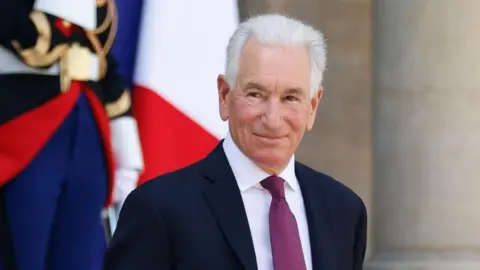 MOHAMMED BADRA/EPA/Shutterstock
MOHAMMED BADRA/EPA/ShutterstockFrance says it will summon the US ambassador to Paris, Charles Kushner, over what it says are unacceptable allegations of failing to tackle a surge in antisemitism.
Kushner, who is Jewish and whose son is married to US President Donald Trump’s daughter Ivanka, made the comments in an open letter to French President Emmanuel Macron in the Wall Street Journal.
Echoing Israel’s criticism of France days earlier, Kushner said there had been an explosion of hatred towards Jews in France since the war in Gaza began.
“France firmly refutes these latest allegations” which are “unacceptable”, said a foreign ministry statement, adding Kushner would be due to appear on Monday.
In his letter, the ambassador called on Macron to tone down his criticism of Israel and outlined examples of antisemitism which he said had “long scarred French life”.
“In France, not a day passes without Jews assaulted in the street, synagogues or schools defaced, or Jewish-owned businesses vandalized. Your own Interior Ministry has reported antisemitic incidents even at preschools.”
He also said he stood ready to work with Macron and other French leaders to “forge a serious plan” to tackle the issue.
The ministry stressed that since the 1961 Vienna Convention ambassadors were not permitted to interfere in a country’s internal affairs.
Kushner’s letter echoes comments made by Israeli Prime Minister Benjamin Netanyahu, who also wrote a letter to Macron last week. In it, he accused the French leader of contributing to antisemitism by calling for international recognition of a Palestinian state.
France plans to formally recognise Palestine in September.
 Reuters
ReutersWhen Macron made the announcement, he said “we must build the State of Palestine, ensure its viability, and ensure that by accepting its demilitarisation and fully recognising Israel, it contributes to the security of all in the Middle East. There is no alternative”.
He has previously publicly criticised antisemitism as being against French values and increased security to protect synagogues and other Jewish centres in response to antisemitic incidents linked to the Gaza conflict.
The war was prompted by an attack in southern Israel by Hamas on 7 October 2023. It saw around 1,200 people killed and 251 others taken hostage.
Jerusalem launched an offensive in response which has killed more than 60,000 people in Gaza, according to the territory’s Hamas-run health ministry.
Last week, a famine was confirmed in Gaza City. The Integrated Food Security Phase Classification said more than half a million people were facing “catastrophic” conditions characterised by “starvation, destitution and death”.
Israel denied there was starvation in the territory and labelled the report an “outright lie”.


